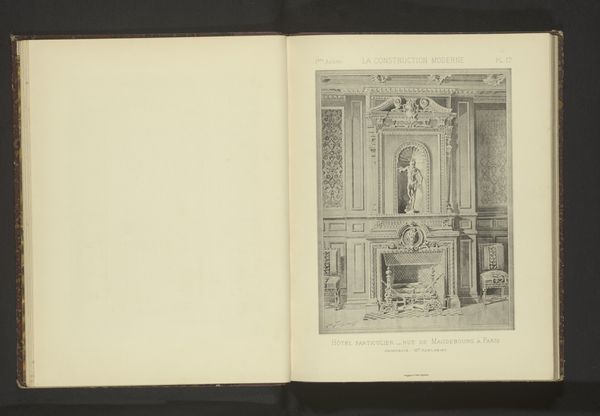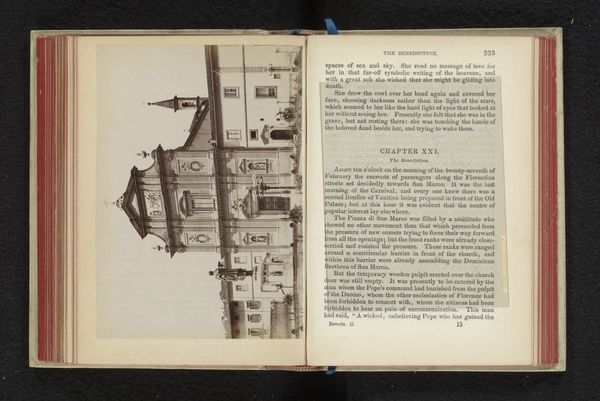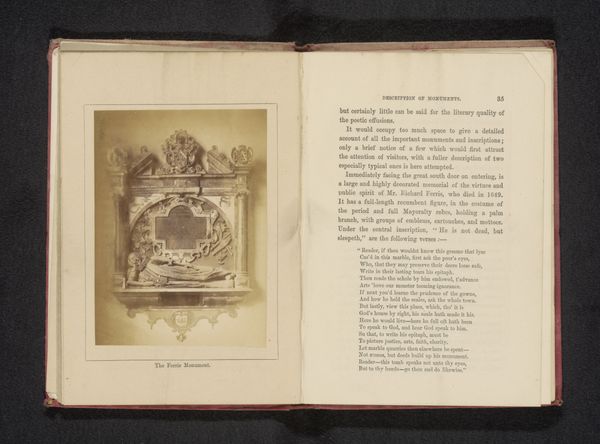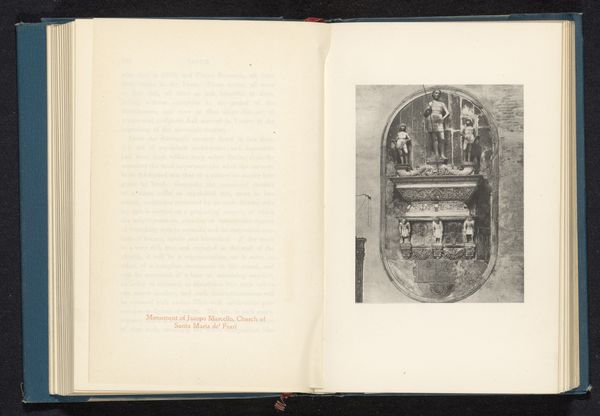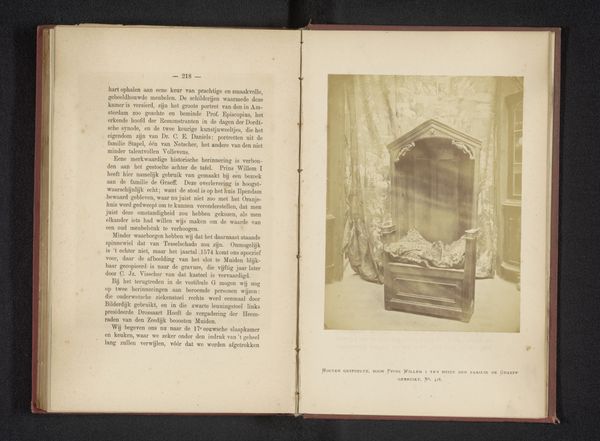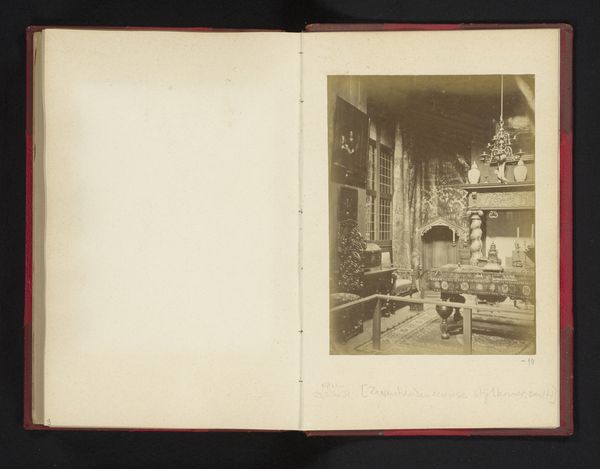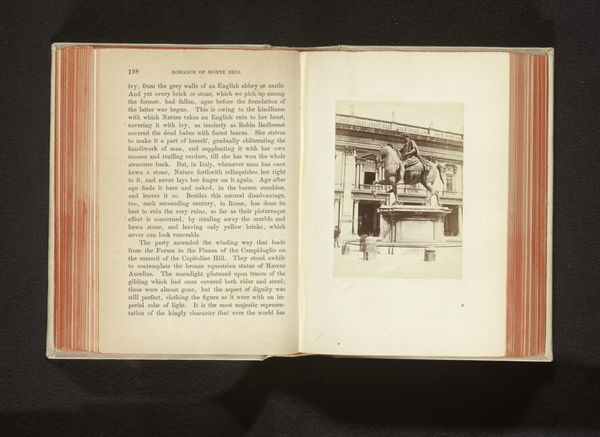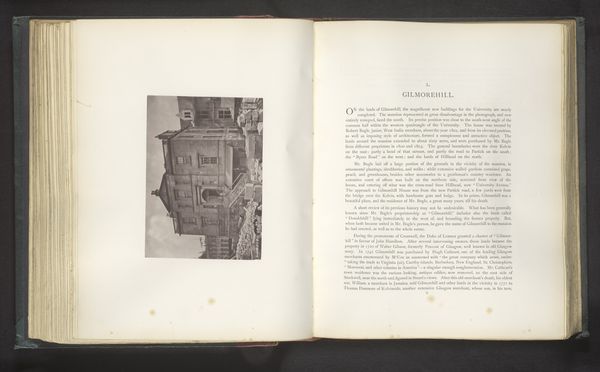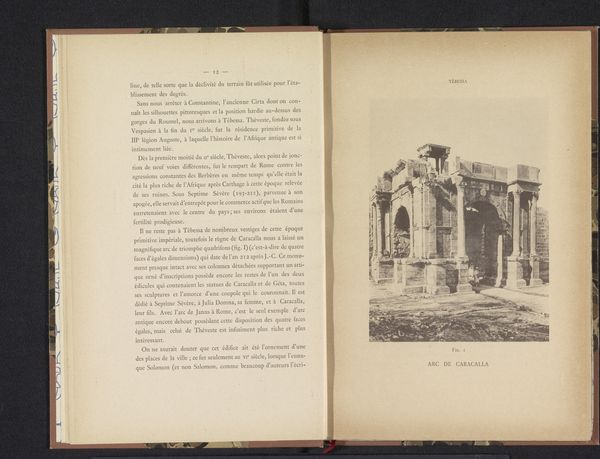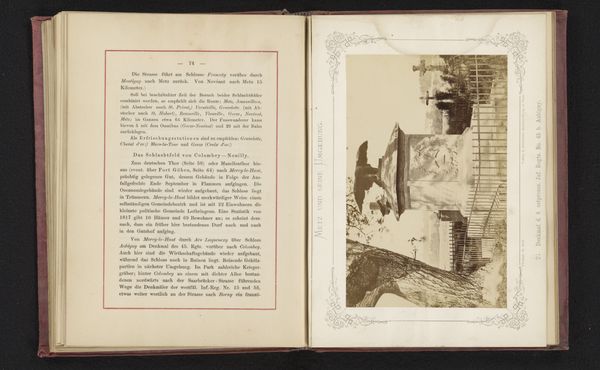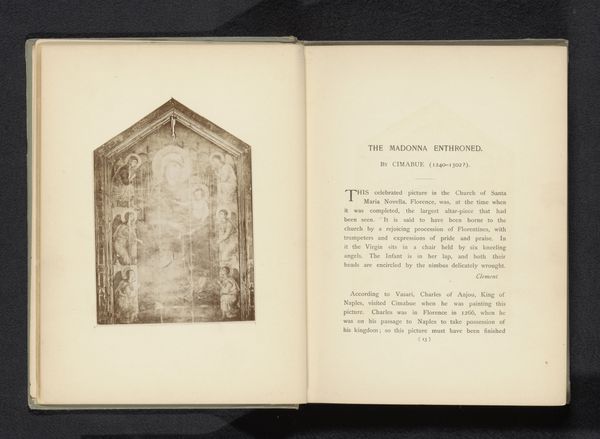
print, photography, albumen-print, architecture
#
aged paper
#
book binding
#
homemade paper
#
paper non-digital material
#
paperlike
# print
#
sketch book
#
hardpaper
#
landscape
#
photography
#
personal sketchbook
#
journal
#
letter paper
#
italian-renaissance
#
albumen-print
#
architecture
Dimensions: height 136 mm, width 97 mm
Copyright: Rijks Museum: Open Domain
Editor: Here we have an albumen print, a photograph of the "Preekgestoelte in de Santa Croce, Florence," taken by Giacomo Brogi sometime before 1863. The image captures a pulpit within the Santa Croce church. What immediately strikes me is the contrast between the photograph itself and the subject it depicts. The print feels quite aged and delicate, while the pulpit appears grand and imposing. What do you see in this piece? Curator: What I see is a document capturing a specific moment, filtered through layers of history and power. Brogi's photograph isn’t simply an objective record. Think about the context: photography was a relatively new medium at the time. By documenting such a powerful symbol of religious authority – that highly decorated pulpit – what narrative do you think Brogi might have been reinforcing, or perhaps even subtly questioning, during a period of significant social and political upheaval in Italy? Editor: That's interesting. I hadn't thought about the photographer's potential position. Do you think the act of photographing the pulpit itself lends it a certain kind of… legitimacy? Curator: Precisely! The photograph can be viewed as an act of preservation, almost a romanticizing of the church's dominance at a time when that power was being challenged. How do you think contemporary viewers may interpret the print's subject against this historical backdrop? Is there something inherently unsettling in how art can serve to bolster a problematic entity? Editor: I guess understanding the socio-political situation helps me understand the layers of intent of the artist when making decisions on what to document. It’s made me rethink how something seemingly simple can actually be deeply complex. Curator: Exactly. Consider how photographs like this entered into circulation, becoming tools for shaping perceptions, reaffirming power dynamics, or quietly suggesting the need for change. Even now, through the layers of time, that quiet voice may prompt a powerful reassessment of who dictates history.
Comments
No comments
Be the first to comment and join the conversation on the ultimate creative platform.
